You may not find this terribly rewarding unless you're included here, so this is a good time for casual and random browsers to turn back before they get too caught up in the sweep and majesty of the proceedings and can't let go.
Fall visits -- 3a: Another descent upon the Frontier Culture Museum with Katy and Dan

We're back to Staunton's Frontier Culture Museum, 29 October 2019, with still more autumn guests. For visitors of a certain refined and cultured nature, it's the obvious choice.

It's a good day for golf carts; why not?

We're beginning with the German house from the 18th century. On two other recent visits, last May and again a few weeks ago, we seized the opportunity to pass on some of the Museum's purpose, layout, and details, and we're resisting the temptation to repeat all of that here.

Last time we were here, this gentleman was demonstrating old German toys and games and playing a German folk tune on a homemade violin sort of thing. Today he's demonstrating the operation of a woodworking lathe for home use.

Our friend Dan is an afficionado, so our resource person dives into an excellent demonstration.
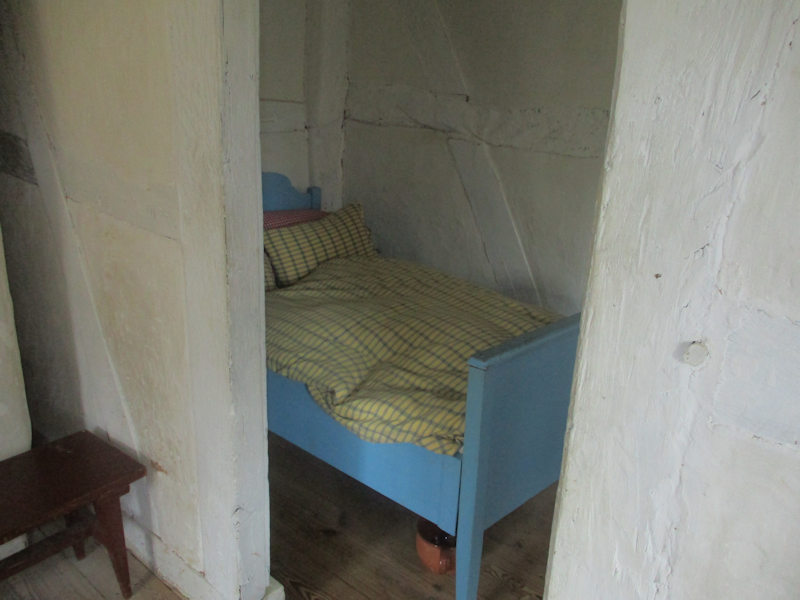
Cramped quarters

The German house was dismantled and brought over from the Protestant regions of the Rhineland. Protestant Germans were recruited by the English government to come along and settle this area of western Virginia.

The Empress of Blandings (as P. G. Wodehouse might have called her)

The German house again, from its backyard pigsty

This is the Irish farm, also from the 18th century -- Protestant northern Irish families were also recruited by the English goverment and colonial businessmen and landowners to help populate the area.

A simple farmhouse for a family, with basic living quarters and workshop within

Memorizing the information plaque. Dan and Katy were good friends for many years in Switzerland and have since also relocated to the old country, i.e., this one.

More demonstrations of crafts suitable for families working from home.
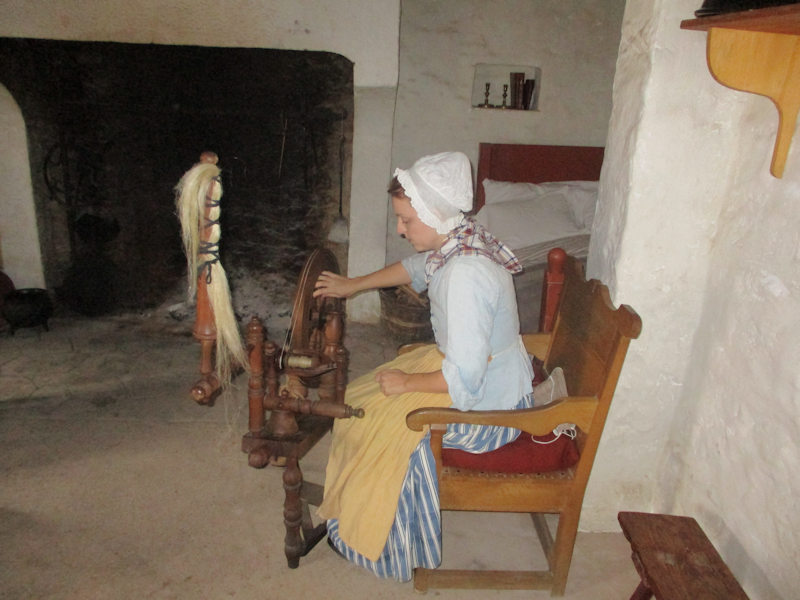
This is the main room, but there is a second room alongside, presently occupied . . .

. . . by a much more imposing loom.

Just along the way, here is the replica of an 18th century Irish forge, which in many communities of the time would have been an essential part of the local economy for many reasons.
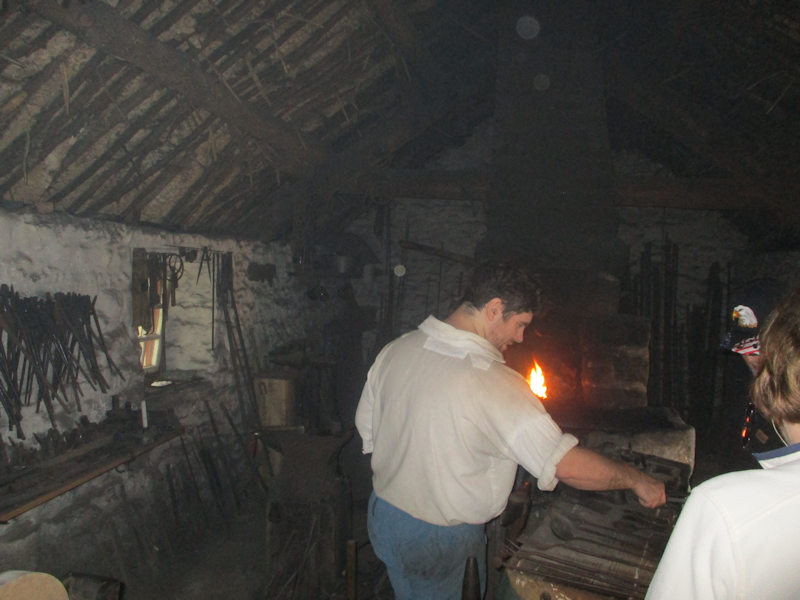
Skilled blacksmiths were much sought after by the colonial promoters, and in fact the blacksmiths here at the Museum make and maintain all of the period fixtures for the exhibits, with some interesting pieces for sale in the gift shop as well.

When we were here last May, it was an oppressively hot day outside, and beyond description in here.

A dedicated craftsman, evidently, and happy to describe everything and take questions.

A fine day for golf carts

The picturesque Irish forge
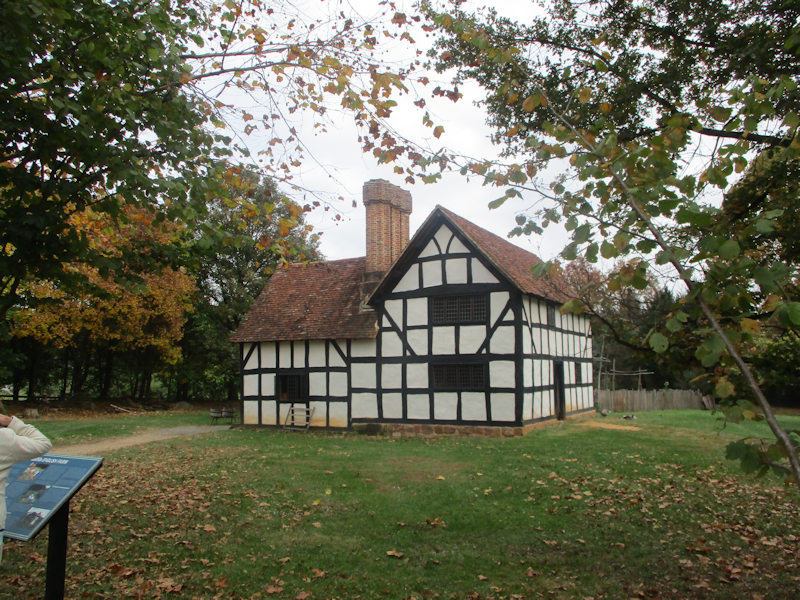
A 17th century English farmhouse -- this is a yeoman farm family's home from the West Midlands.

An instant education on the English farms and the cultural contributions of its inhabitants to the Shenandoah region.

A somewhat more substantial house than the ones we've just seen, and it's got a first floor above with additional bedrooms (off limits for us).
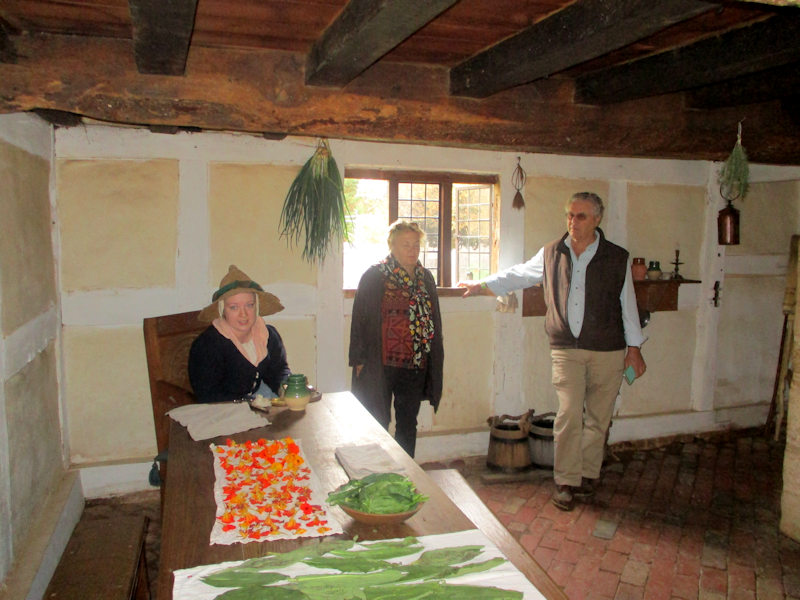
The knowledgeable docent is describing the kinds of vegetables and herbs that would have been, and are now being, grown in the kitchen garden outside.

The master bedroom

The backyard garden, reproducing the methods and expected products of the 17th century
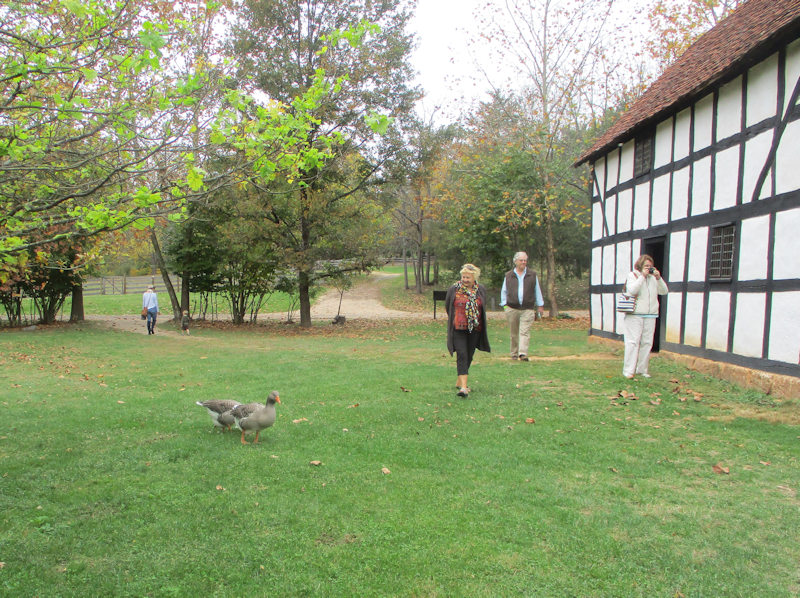
-- Don't try to pet the geese; they'll bite your hand off.

The garden (it's nearly November now, so not much to see here today)

School groups, learning about an English farmhouse such as Shakespeare might have lived in. Except that he didn't; he grew up in a more commodious town house in downtown Stratford, and bought himself an even better one for his retirement.

Our chauffeuse for the day

This is a recreation of a West African village, commemorating the lives and cultural influences of the people who were brought here to the Valley as enslaved laborers.



Our party is over there discussing African drumming with an articulate young fellow who is actually from Burundi, but can represent the West African approach to it very well.

And who can induce some rewarding audience participation very cleverly. This performance was masterful, in fact.

Sharing congratulations for the audience participator

Next we're over to the Native American village, called 'Ganatastwi', 'small village' to the Onondaga Iroquois (very small, in fact, with just two wigwams).

The interpreters here explain the practical way of life here (back in the day) and the contributions that the Native Americans made to the evolving Shenandoah culture.
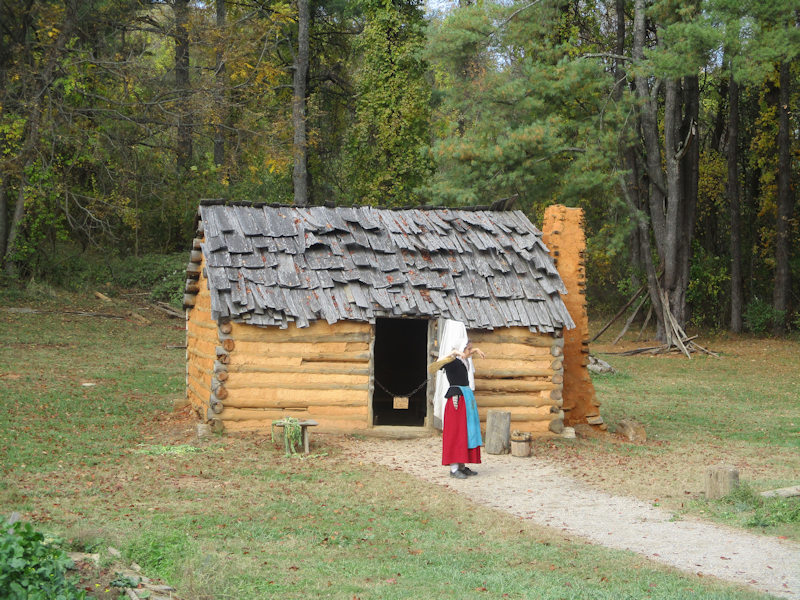
A bored interpreter awaiting guests outside the 1740s 'starter farm' replica of the kind stuck up by the earliest Europeans moving into this region.

More questions

Onward to the 19th century American farmsteads -- this one from the 1820s.


Our friend and neighbor Jack helps out at the Museum as a volunteer docent and golf cart shuttle driver

Autumn leaves

The sort of schoolhouse that some, though not all, communities might have invested in if they had enough residents who thought that a school might be a good idea.

The 1820s farmhouse from the front

A more substantial farm of the 1850s, with more amenities, a springhouse, smokehouse, etc., but no wifi.

That's the lot. We've golf-carted back to the visitors' welcome centre and are headed home for dinner on some take-out Thai.

The layout -- worth a visit (hint: the annual pass costs very little more than the single entrance, which is also very reasonable)
Next stop: Staunton's Veterans Day Parade. Huzzah! Hoorah!

 Dwight Peck's personal website
Dwight Peck's personal website
















































